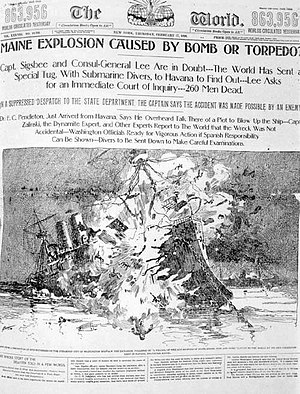The history of war reporting is one that can be easily identified by the relationship it has developed between the news and the people seeking that news. War was a contributing factor to the development of preliterate systems of news travel as characterized in Mitchell Stephens book “A History of News”. War reporting grew in tandem with various other journalistic themes such as sensationalism, propaganda, and technology. While there seems to be a niche for every type of news one seeks, war is still the most sought after story by reporters to this day.
In it’s initial stages war reporting was not such much for information as it was for physical protection from attack. A great example of this is the fact that American schoolchildren grow up knowing the significance of the phrase “The British are coming”. Well, maybe they found out a different way. Protection for the populace of a country necessitated war reporting. Sooner rather than waiting till the last minute like our friend Paul Revere, people started to find it useful to go to the action.
John Bell became one of the first war reporters during the late 18th century when he volunteered himself to report on British and French fighting in Belgium. By the 19th century, newspapers were beginning to see the benefit of sending reporters to cover wars as illustrated by the Times of London in 1807 and 1854. They sent correspondents Henry Crabb Robinson and William Howard Russel to cover the Napoleonic and Crimean wars respectively. War brought in readership because citizens were not only concerned about their boys, but they also wanted to know whether they needed to worry about being invaded by stuff like this. War reporting provided a sense of security to the populace of a country in these two manners.
War and technology go hand in hand during the development of journalism. During The Mexican War the New Orleans Picayune set out to break the story first by moving their type boards to flat boats in the Gulf of Mexico in order to print immediately upon docking. Samuel Morse’s invention did so much for the Civil War than the first battle between ironclads (which ended in a draw and both ships being knocked out of action for the remainder of the war). People discovered the outcome of battles the following day rather than weeks or months later. Not to trivialize technology, but it is not what I’m trying to harp on here.
What does the development of war reporting mean to the rest of journalism? Well it means many things, for instance it facilitates the development of a specific correspondent for media outlets. This then leads media outlets to further specified news positions such as political coverage, crime, gossip, food, the arts, sports, and so on. War reporting provides that security previously mentioned, and also discussed in Mitchell Stephens book. Most importantly though, war sells. During the Civil War a northern newspaper could sell five times more than normal circulation due to this need of the northern populace to be satisfied. More readers means more money.
War reporting has come a long way from its early origins of necessary protection against invaders, to mental and emotional security of a populace disconnected from the action. It developed because of these same security issues. But war reporting continues to be a popular subject because it brings home the bacon.




